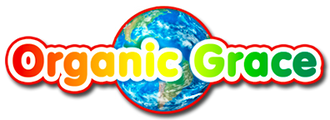30th May 2023
Green Milking It: Moms find industrial chemicals in their breast milk an outrage - and a call to action
Gregory Dicum, Special to SF Gate
Wednesday, May 17, 2006
Not long before Mother's Day last year, new mom Mary Brune's bubble of maternal bliss was rudely punctured. "I was nursing my daughter," says the technical writer who lives in the East Bay, "and flipped on the news when a story came on about perchlorate." The story reported that this component of rocket fuel, implicated in causing mental retardation, had been found in human breast milk at levels considered unsafe by the National Academy of Sciences.
"I was really scared," remembers Brune. But like a mama bear when her cub is threatened, after Brune was done being scared, she got mad. "I was so outraged," she says, recalling the feeling that her body had been invaded.
Brune soon learned that human breast milk contains a lot more than just perchlorate. Recent studies of this "body burden" have found that Americans walk around with a stew of dozens of toxic chemicals in their bodies, acquired through a lifetime of living in an industrial society. Many industrial chemicals are stored in fat deposits -- tissue a mother uses to create rich milk for her infant.
"All toxic chemicals capable of accumulating in the human food chain will, sooner or later, reach their highest concentrations in the milk of human mothers," writes Dr. Sandra Steingraber, an ecologist and mother, in "Having Faith," her book on motherhood. "When it comes to persistent organic pollutants," she goes on, "breast milk is the most contaminated of all human foods."
Besides the inherent ick factor this imparts to a substance that should be the very essence of wholesomeness, the presence of these chemicals in the diets of babies is troubling for two other reasons. First, infants eat a lot for their small size: Steingraber writes that they ingest 50 times more PCBs per pound of body weight than adults do.
Even more troubling, the effects of many of these chemicals on developing bodies -- both in the womb and after birth -- can be alarming. Many can act as hormone-mimicking endocrine disrupters, which have been implicated in the strange changes going on in human populations over the past few decades.
Dr. David Santillo, a British biologist and analytical chemist who is one of the authors of a new Greenpeace report on reproductive health and chemical exposure, told me that some reproductive disorders in the United States are on the rise.
"In the two decades from 1970 to the early '90s," he says, "the incidence of hypospadias (where the urethra exits towards the base of the penis) doubled for the U.S. as a whole. Concerns have also been raised regarding declining ratios of boys to girls: In the same two-decade period, it has been estimated that some 38,000 too few boys were born across the U.S.A."
And there's no telling what other long-term effects these chemicals might be causing. They are suspects in a host of problems later in life, including declining sperm counts, increased rates of testicular cancer, early puberty in girls and endometriosis.
Part of the problem is that our bodies contain so many new chemicals that mix in unknown ways. "We are never exposed to just one chemical at a time," says Santillo, who notes that at least 100,000 chemicals are in use worldwide, with new ones introduced all the time. "Even if all are present at levels which, on an individual chemical basis, are considered 'safe,'" he says, "the effect of them combined can be substantially greater."
In her book, Steingraber lists some of the chemicals that concern her. "In addition to DDT and PCBs, common contaminants of breast milk include flame retardants, fungicides, wood preservatives, termite poisons, mothproofing agents, toilet deodorizers, cable-insulating materials, dry-cleaning fluids, gasoline vapors, and the chemical by-products of garbage incineration."
No wonder Brune got so angry.
And she wasn't alone: With a group of three friends who were nursing moms, Brune started Making Our Milk Safe, the first organization to address chemicals in the body from the perspective of nursing mothers.
That experience is crucial for them in talking about breast-feeding, because the last thing MOMS wanted to do was give people another reason not to breast-feed. Breast milk contains nutrients, immune factors and living cells that help babies develop optimally. After all, it's the product of eons of evolution -- a pedigree that baby formula cannot compete with.
"For every one breast-fed baby that's hospitalized," says Katy Lebbing, manager of the Lactation Library at the La Leche League headquarters in Illinois, "10 formula babies are hospitalized. In the first four months of life, it's one to 15." She adds that a 2003 study estimated that more than 3,500 children under 5 die every day from causes preventable by optimal breast feeding -- a total of 1.3 million kids every year worldwide.
In spite of this, fewer than a fifth of babies in the United States breast-feed for a year -- the minimum recommended by the American Academy of Pediatrics. That's why Brune is adamant that MOMS supports breast-feeding. "We are nursing moms," she says, "and we're tying to do something about toxic chemicals in breast milk because we think it's such a wonderful, amazing, miraculous food for our children and we want to protect it."
Lifestyle choices do make a big difference in body burdens -- longtime vegans are least exposed to many of these chemicals, and reducing household dust, eating organic and using nontoxic cleaning and body-care products can reduce the levels of all kinds of chemicals in the body. But it's the entire lifetime exposure that counts.
"What's in your breast milk as a first-time mom is really a collection of your entire life's exposure to chemicals," says Brune. "So, unfortunately for you, if you're already a nursing mom, there isn't a whole lot you can do."
Instead, a more effective way of dealing with the problem in the long run -- an approach that helps everyone, mother or not, and regardless of their ability to buy organic food or change their lives in other ways -- is to reduce these chemicals in the environment in the first place. Long-term studies have proved that banning chemicals like DDT and PCBs does lead to quick and dramatic lowering of levels in human breast milk. That's why activists are now looking at chemicals like flame retardant PBDE, which is one of the class of chemicals rising most rapidly in American breast milk.
But really solving the problem more broadly means reassessing the way our society thinks about the chemicals in our lives. "Despite my scientific background, it is even difficult for me to find out exactly what additives or ingredients have been used in any particular product," says Santillo, a father of two. "The only real solution is to stop hazardous chemicals being used in consumer goods in the first place. It does not require the impossible -- only a commitment to protect human health and the environment over and above short-term business interests."
That's the crux of an important debate going on in Europe right now as new chemical regulations are being formulated. Even big chemical companies there do not dispute the fact that chemicals are now widespread in human bodies, and even that they may have deleterious effects. Instead, the discussion hinges on whether tighter rules are worth the economic costs.
Brune sees breast milk as a powerful place to take a stand and bring this debate to the United States. It's hard to argue that it's OK to have mysterious chemicals floating around in the bosom of motherhood just so the chemical industry can protect its profits. So MOMS, which has grown into a network of more than 200 nursing mothers across the United States and Canada since Brune and her friends started it last year, is getting ready for action.
Though she wouldn't tell me the company's identity, Brune says MOMS is ready to launch a grassroots campaign this summer against a retailer of baby products. The goal is to get them to remove products containing bio-accumulating chemicals from their shelves and lead the way for other companies.
MOMS is about to become the mommy group from hell for retailers who haven't thought about the issue. "A large group of nursing moms who spend a lot of money shopping -- buying things for their children -- represents a lot of leverage and persuasive power," says Brune.
She adds that this is an issue that anyone can get behind: "Whether you're a blue-state mom, red-state mom, whatever -- nobody wants their kids exposed to toxic chemicals. This is a human issue -- something we all have to deal with. There is nothing more basic than a mother's right to provide clean and healthy breast milk for her child."
Gregory Dicum, author of Window Seat: Reading the Landscape from the Air(link is external), writes about the natural world from San Francisco. A forester by training, Gregory has worked at the front lines of some of the world's most urgent environmental crises. For more of his work, see www.dicum.com/list

